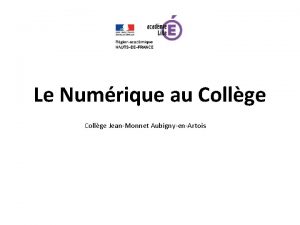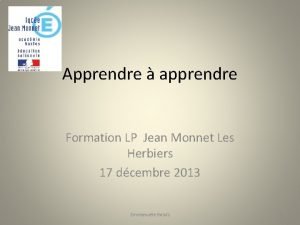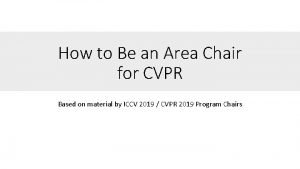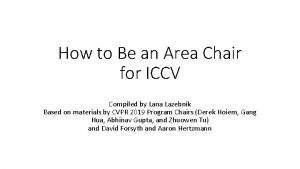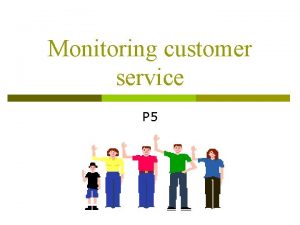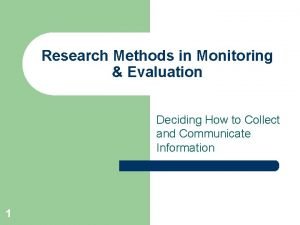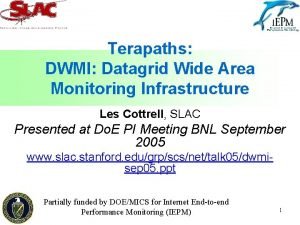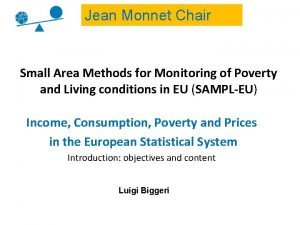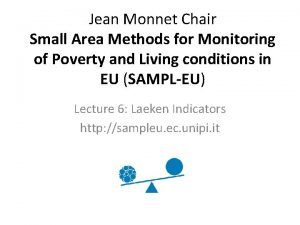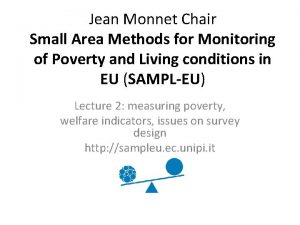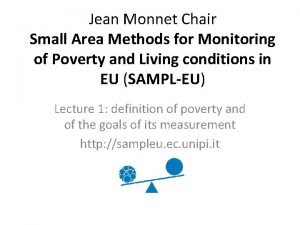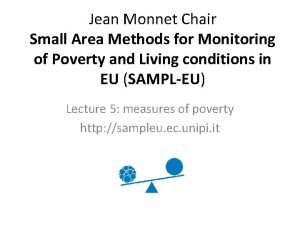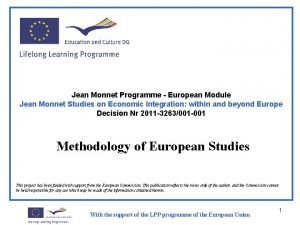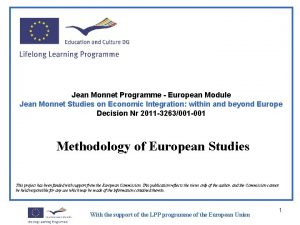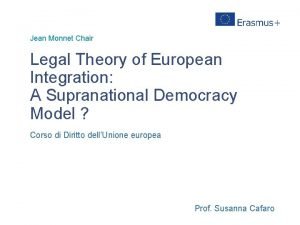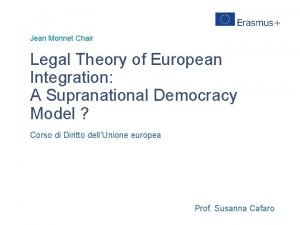Jean Monnet Chair Small Area Methods for Monitoring

















- Slides: 17

Jean Monnet Chair Small Area Methods for Monitoring of Poverty and Living conditions in EU (SAMPL-EU) Lecture 3: consumption and income http: //sampleu. ec. unipi. it

Definition of Poverty . . . and Living Conditions

Measuring Poverty • The first step in measuring poverty is defining an indicator of welfare such as income or consumption per capita. • Information on welfare is derived from survey data. • Good survey design is important. [1] EU projects: SAMPLE, AMELI, Eframe, INGRID; World Bank, United Nations [2] Betti G, Lemmi A (2014) Introduction. In: Betti G, Lemmi A (eds) Poverty and Social Exclusion: New Methods of Analysis, London: Routledge. , pp 1– 6

…be aware Indicator of welfare such as income or consumption per capita comes from National Accounts and should be in coherence with them and with the principles adopted by the European Statistical System. [1] reference: Lectures by Luigi Biggeri [2] principal financial instruments to support Member States in their fight against poverty and social exclusion at the EU level: ESF European Social Fund

Income What is income? Can it be measured accurately? Income=consumption+change in net worth • Example: Suppose I had assets of $10, 000 at the beginning of the year. During the year I spent $3, 000 on consumption. And at the end of the year I had $11, 000 in assets. Then my income was $4, 000, of which $3, 000 was spent, and the remaining $1, 000 added to my assets [1] reference: Lectures by Luigi Biggeri

Income: problems • The first problem with this definition is that it is not clear what time period is appropriate Should we look at someone’s income over a year? Five years? A lifetime? • The second problem is measurement. wages and salaries (easy); interest, dividends, and income from some types of self-employment (still possible); farm income or of the value of housing services; or of capital gains(hard) Developing country: In societies with large agricultural or selfemployed populations, that income is seriously understated.

Consumption includes both goods and services that are purchased and those that are provided from one’s own production (in-kind). Income typically rises and then falls in the course of one’s lifetime, in addition to fluctuating somewhat from year to year, whereas consumption remains relatively stable. [1] reference: Lectures by Luigi Biggeri

Consumption includes both goods and services that are purchased and those that are provided from one’s own production (in-kind). Income typically rises and then falls in the course of one’s lifetime, in addition to fluctuating somewhat from year to year, whereas consumption remains relatively stable. [1] reference: Lectures by Luigi Biggeri

Consumption: problems A more practical case for using consumption, rather than income, is that households may be more able, or willing, to recall what they have spent rather than what they earned. • Households tend to underdeclare what they spend on luxuries or illicit items • Questions matter. The understatement of both income and consumption means that poverty rates are overstated. [1] reference: Lectures by Luigi Biggeri

Consumption Measuring durable goods • Not only food, the ultimate basic need (which constitutes seven-tenths of the spending of poor households), but also clothing, and shelter… bicycles and televisions, are bought at a point in time, and then consumed over a period of several years…each durable good that the household owns.

Consumption Housing services • If you own your house or apartment, it provides housing services that should be considered as part of consumption.

Household composition differences Households differ in size and composition • First, different individuals have different needs. A young child typically needs less food than an adult, and a manual laborer requires more food than an office worker. • Second, there are economies of scale in consumption, at least for such items as housing. It costs less to house a couple than to house two individuals separately.

OECD scale

Consumption Measuring durable goods • Not only food, the ultimate basic need (which constitutes seven-tenths of the spending of poor households), but also clothing, and shelter… bicycles and televisions, are bought at a point in time, and then consumed over a period of several years…each durable good that the household owns.


Distributions of Income and Consumptions - Italy Distributions – 2012 – HBS Average monthly Equivalized (Istat) Consumption expenditure (euros) Distributions 2012 - EUSilc Average monthly Disposable Income (euros) z z 300 7000 -2000 14000

Poverty line The line z - called Poverty Line - is a national threshold summarizing the minimum level of consumption or income below which a individual or a household is considered poor. How to determine it?
 Jean-gabriel monnet
Jean-gabriel monnet Jean omer marie gabriel monnet
Jean omer marie gabriel monnet Jean monnet chair
Jean monnet chair Jean monnet chair
Jean monnet chair Ent jean monnet aubigny
Ent jean monnet aubigny Jean monnet les herbiers
Jean monnet les herbiers Jean monnet activities
Jean monnet activities Myriam rancon
Myriam rancon Erasmus jean monnet
Erasmus jean monnet Lum jean monnet
Lum jean monnet Cvpr borderline
Cvpr borderline Iccv area chair
Iccv area chair Pascale monnet chaloin
Pascale monnet chaloin Xavier monnet
Xavier monnet Methods of monitoring customer service
Methods of monitoring customer service Research methods in monitoring and evaluation
Research methods in monitoring and evaluation Wax pattern fabrication
Wax pattern fabrication Wide area monitoring
Wide area monitoring




